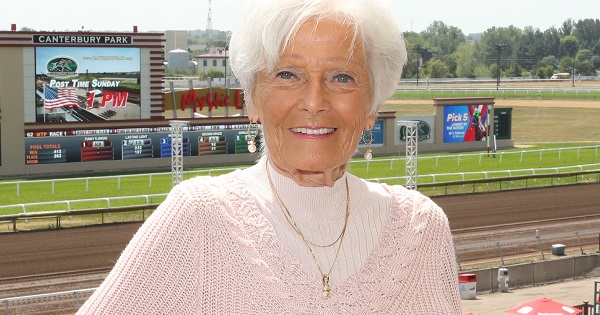If there was a job to be done in the early days of Minnesota horse racing, you could count on Mary Green to do it. As one of the horsewomen and men who so badly wanted to bring a racetrack to their home state, Green attended meetings, met with legislators and lobbied for the state to approve pari-mutuel racing.
They were busy racing their horses, too. They just had to go elsewhere to do it.
“In the early 1980s, Minnesotans would race at Assiniboia in Winnipeg, in Chicago, and at Aksarben in Omaha,” Green said, noting the Minnesota Derby was held at Assiniboia. “In those days, you couldn’t get a seat on the plane, because everybody went. The great dream was to get a track in Minnesota.”
In the 1970s, Green was showing quarter horses in Duluth. When she moved to Minneapolis with her then-husband, who was getting into thoroughbreds, she discovered that breed as well. She also joined the Minnesota Thoroughbred Association, an organization in which she is still active.
When it was decided that a track would be built in Shakopee, those with racing roots knew the job was far from done. Green, always quick to pitch in, did whatever was necessary.
“I thought we needed to have a breeders’ fund, so I chaired a committee to create it,” she said. “I turned that over to the commission once it was formed. I typed it up on my little Royal portable typewriter. I still have [the documents].”
Green stayed active in racing when Canterbury Downs opened in 1985 and for years to come. Again, she did a little bit of everything: standing stallions, breeding mares, foaling babies. She’s been involved with several memorable racehorses, including Metric Kettle, Blair’s Cove, Lady Tapestry and Spoofin’.
She also owned Millimark, the first Minnesota-bred to win at the new track.
“When we put a saddle on him, he sat down like a dog,” she recalled. “Take the saddle off, he’d stand up.” Eventually, the problem was solved–and on July 27, 1985, Green’s Minnesota-bred found the winner’s circle.
When the track closed in 1994, Green stayed involved with the industry. She worked as an assistant for Randy Sampson at the family training center, and she helped make arrangements for Minnesota-bred races to be run at Arlington and Aksarben when Canterbury was dark.
Green was there with Sampson when his family purchased the track, bringing racing back to her beloved state. She served as executive assistant to Randy for many years after and was a perfect liaison between track management and horse people during that time. She knew the horsemen and spoke their language.
She even helped procure the first apartment for track announcer Paul Allen. “I was like a mother hen,” she said, an apt description for a woman who worked tirelessly for the benefit of all.
Being inducted into Canterbury Park’s Hall of Fame seems a fitting reward, given Green’s devotion to the track and the industry. But to her, all that work has never seemed like work.
“I loved every bit of it,” she said.
